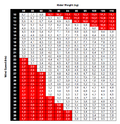Windsurfing
Windsurfing is a wind propelled water sport that is a combination of sailing and surfing. It is also referred to as "sailboarding" and "boardsailing", and emerged in the late 1960s from the aerospace and surf culture of California. Windsurfing gained a popular following across Europe and North America by the late 1970s and had achieved significant global popularity by the 1980s. Windsurfing became an Olympic sport in 1984.[1]
Newer variants include windfoiling, kiteboarding and wingfoiling. Hydrofoil fins under the board allow the boards to safely lift out of the water and fly silently and smoothly above the surface even in lighter winds.
Windsurfing is a recreational, family friendly sport, most popular at flat water locations around the world that offer safety and accessibility for beginner and intermediate participants. Technique and equipment have evolved over the years
Major competitive disciplines include slalom, wave and freestyle. Increasingly, "foiling" is replacing traditional events and the IQfoil class is the new Olympic windsurfing racing class for France in 2024.
Modern windsurfing, as a sport and recreational activity, did not emerge until the latter half of the 20th century. The earliest version of a sailboard design utilizing a freely articulating sail on top of a board was created in 1962 by American Newman Darby. Independently, engineer Jim Drake invented and co-patented the version we all know today and called it Windsurfing- a new new concept in sailing.
| Wikimedia Commons has media related to Lua error in Module:Commons_link at line 62: attempt to index field 'wikibase' (a nil value).. |
Windsurfing Media
- Jim Drake's Windsurfer Blueprint.jpg
Jim Drake's Windsurfer Invention
Windsurfing in the late evening on a longboard at Sandbanks in the 1980s (Poole Harbour, England)
Formula racer in San Francisco Bay





